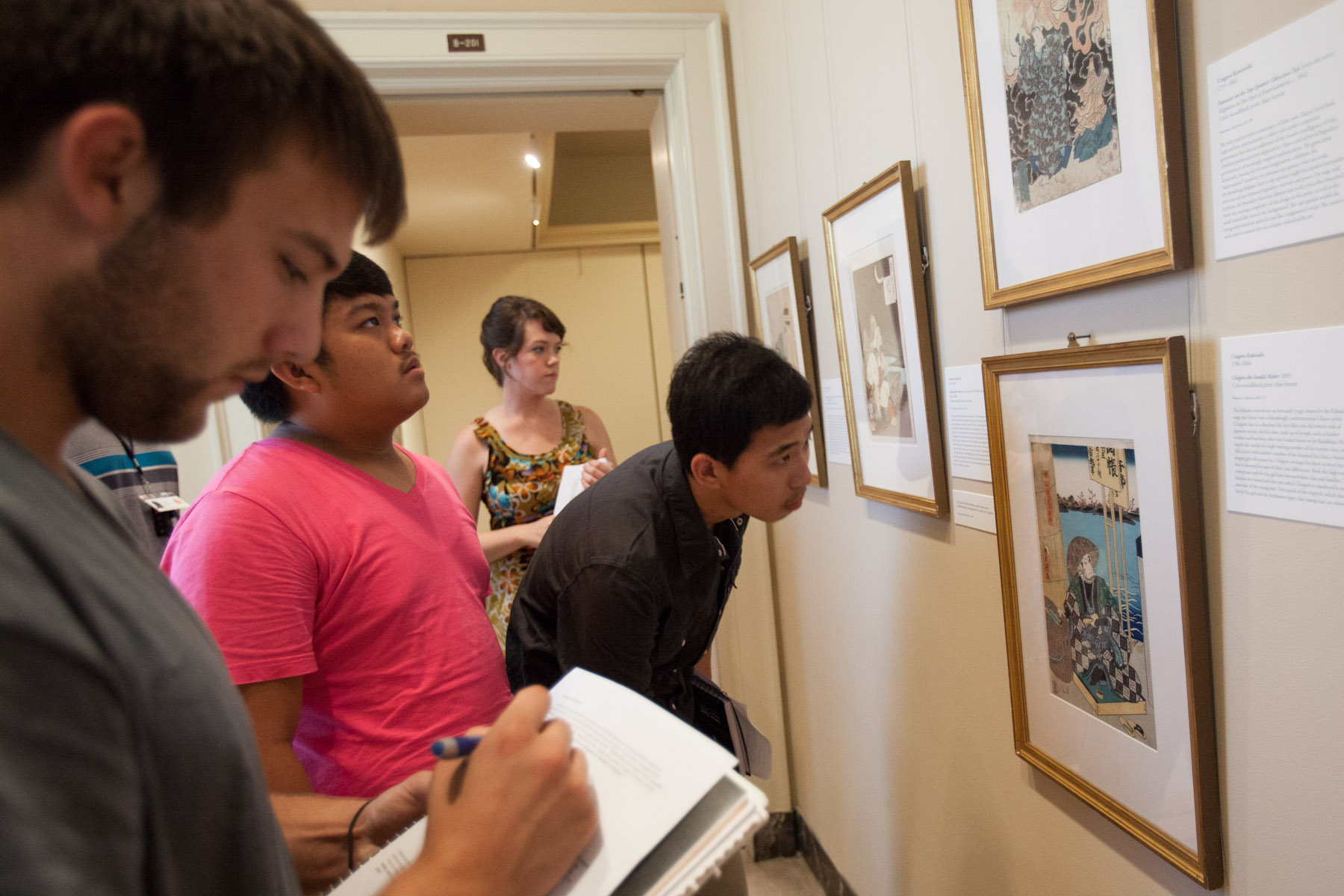Ancient philosophers pondered the meaning of art, posing questions about aesthetics. Plato's theory of the arts featured the ideas of imitation of reality and human action, and Aristotle's became a cornerstone of Western art, focused on elements of symmetry, harmony and composition.
Students in the University of Virginia summer session course, "The Philosophy of Art," taught by graduate student Gwen Nally, are learning about how philosophers have addressed aesthetics through the ages.
Nally, a doctoral philosophy student in the Graduate School of Arts & Sciences' philosophy department, said her goal is to give the students an idea about the nature of art and artworks through a historical perspective of writers and their answers to the basic philosophical questions; and to show the importance of applying the questions to evaluating works of art.
"They are learning to think more carefully about a subject like art about which so much has been written and there are so many philosophical perspectives," Nally said. The students can then take these philosophical skills – critical analysis and good paper writing – and apply them to other subjects they are studying, she added.
Entering first-year student Khaosara Akapolawal said the course brings another perspective to what she learned in the humanities program in her high school. "I've taken art history and I've taken philosophy but I've never taken the two together. This class is deeper than I thought. It's challenging, but I like it," she said.
The first question the class addressed is: What is Art? This part of the course dealt with traditional answers including representationalism, formalism and expressionism.
Next, the students were introduced to the ontological status or nature of artworks and aesthetic properties of beauty, grace, elegance and even ugliness. They considered artworks as objects.
And finally, they discuss issues of evaluation, subjectivity, taste and value. Readings and classroom discourse focused on questions of subjectivity and the moral impact of art. Some philosophers believe that aesthetic values could be different from person to person, Nally said.
After a discussion about 18th-century German philosopher Immanuel Kant's theories of beauty and the sublime, Nally took the class on a walk to help them understand that objects can be beautiful but not sublime. The sublime is limitless and is found only in "formless entities" They stopped in the Rotunda Dome Room and when the students looked up through the dome's oculus and saw the limitless sky, she said everyone commented that they understood the sublime. "The room framed the sublime through the oculus," Nally said. It was an unexpected lesson.
With the arrival of modern and conceptual art, artists brought a different way of thinking about their work and theorists needed to change to respond to what was happening in the art world.
Twentieth-century art critic Arthur Danto, who is know for his work in philosophical aesthetics, framed his theories around an institutional theory of art – if art is treated by the producers and considered by the art world as art, it is art. It becomes art "because it is appreciated by the art world," Nally said. "Someone has to designate it as art." Danto's theory of art is "dependent on the work's status in the institution. It does not address what the creator intended."
A class on Jerrold Levinson, a philosopher best known for his theories related to the aesthetics of music, introduced the question of the artist's intention and of more personal or useful works, such as diary writing or the quilts made by African-American women in Gees Bend, Ala. In cases such as these, he takes into consideration the unconscious intention of the artist, but it still fits into a tradition, such as the quilts, the designs of which mirror modern art.
Levinson also makes allowances for revolutionary art, works that are intended to be different from all works that came before it, such as Marcel Duchamp's "Fountain," a urinal he elevated to the level of art. Duchamp intended the work to be art and submitted it to be included in an exhibition with other works of art. Nally said Levinson might consider it art because the artist intended it that way and because it relates to past art by considering what has come before and rejecting it. "You have to know a tradition to reject it," she said. "To reject a tradition is still to relate to it."
Cameron King, an artist from North Carolina who is getting a jumpstart on his academics and will be a first-year this fall, said that although he is interested in what people have viewed as art historically and philosophical theories that have built on each other, he adheres to the idea that "art is in the idea of the beholder." "You think you put a stamp on art and then a new door opens and there's just a whole aspect, like modern art," he said. It's a break from what has come before and "it's all totally different art. Art is a new world now and it changes every single day."
— by Jane Ford
Media Contact
Article Information
July 27, 2012
/content/students-question-what-art-summer-philosophy-course

